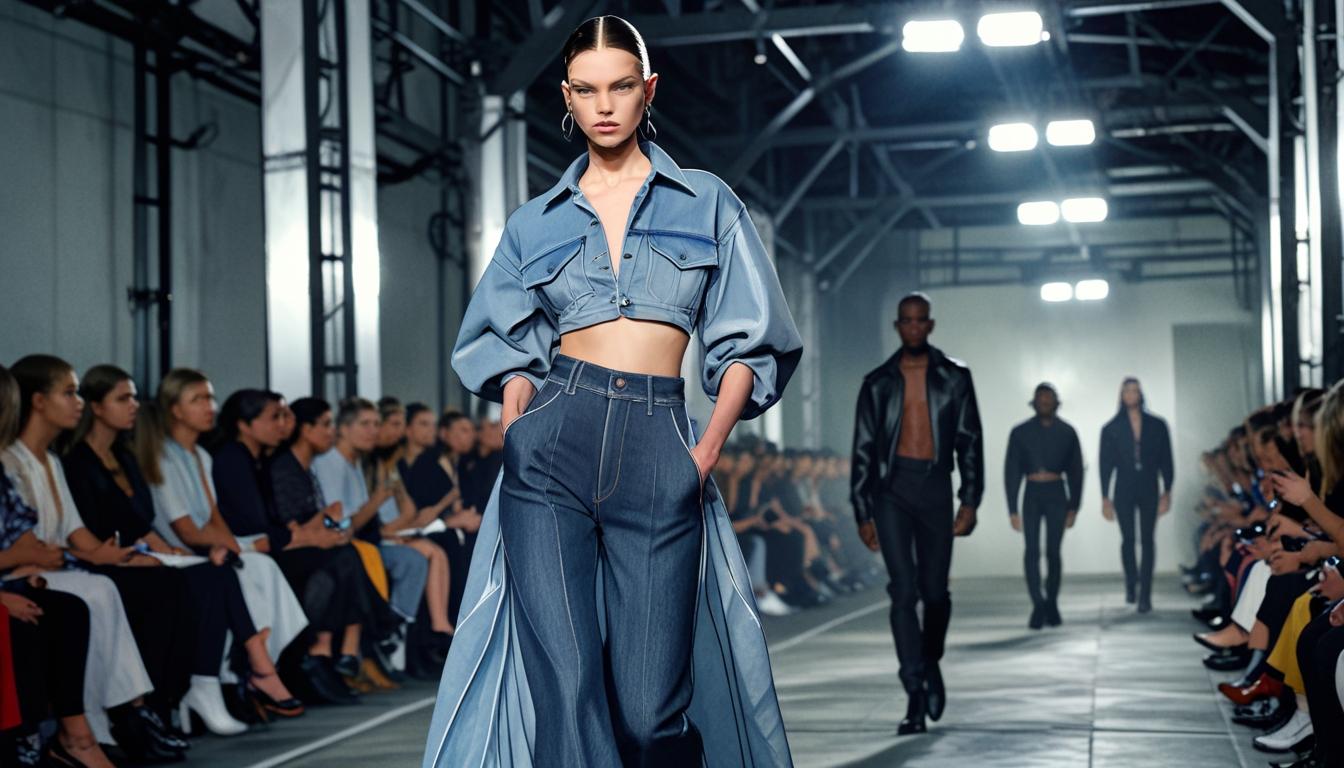Denim has transformed from its origins as durable workwear to a symbol of high fashion, reflecting cultural shifts and artistry from various renowned designers.
Denim, a fabric embedded in the cultural fabric of America, particularly through its association with San Francisco and the iconic brand Levi Strauss, has undergone a remarkable transformation over the decades. Originally conceived in the late 19th century as durable workwear for miners, denim has evolved to become a versatile symbol of high fashion and luxury, a journey that resonates with the creative narratives of various esteemed designers today.
The history of denim is deeply interwoven with that of Levi’s, which, in 1873, achieved the groundbreaking patent for the first pair of riveted denim jeans, marking the beginning of its cultural ascent. Speaking to LUXUO, Sanjeeva Suresh highlighted that what began as a pragmatic garment soon caught the eye of fashion designers, who recognized the rebellious and countercultural essence of denim. This shift from practical attire to fashion statement reflects broader cultural transformations, as denim has been embraced by various figures, including miners, cowboys, rock stars, and even presidents, effectively embodying the spirit of resilience and reinvention.
The term “Canadian Tuxedo,” a style characterized by an all-denim ensemble, traces its roots to a notable incident involving singer Bing Crosby in 1951, where he was denied entry to a hotel in Vancouver due to his denim outfit. This incident spurred Levi’s to create a special denim tuxedo for Crosby, which later became a pop culture phenomenon. Notable moments in denim history include Britney Spears and Justin Timberlake’s memorable all-denim outfits at the 2001 American Music Awards, illustrating denim’s transition from workwear to a staple of high fashion.
Luxury fashion houses have redefined denim, enhancing its role beyond mere fabric to an artistic medium. John Galliano’s tenure at Dior in the early 2000s marked a pivotal moment, where his dramatic denim designs merged fantasy with craftsmanship, showcasing the material in haute couture through elaborate embroidery and Victorian-inspired silhouettes. Following Galliano, Maria Grazia Chiuri’s collections at Dior further explored denim’s capabilities, blending its utilitarian roots with luxury fashion, presenting tailored pieces that highlighted femininity and elegance.
Similarly, designer Daniel Roseberry at Schiaparelli has reimagined denim through the lens of surrealism, incorporating vintage 1980s jeans into couture pieces adorned with anatomical motifs, creating a dialogue about the concept of body and deconstruction. Rousteing’s artistry at Jean Paul Gaultier introduced denim into the realm of haute couture with luxurious embellishments and unexpected designs, demonstrating the fabric’s adaptability and potential for innovation.
Ronald van der Kemp has also pushed the boundaries of denim through a sustainable lens, focusing on upcycling and avant-garde designs that challenge conventional notions of luxury. His denim creations embrace raw edges and patchwork, proving that sustainability does not preclude a high-end appeal. Designers like Olivier Rousteing at Balmain have similarly approached denim with a fresh perspective, integrating gold accents and intricate details into relaxed silhouettes that speak to denim’s luxury potential.
Chanel has also introduced denim into their collections under creative directors like Karl Lagerfeld and Virginie Viard, integrating the fabric with high-end materials and tailoring techniques. The late Lagerfeld knit denim into tailored jackets and accessories for a modern twist, while Viard’s recent collections have included structured denim pieces with luxurious refinements, elevating the fabric’s status within haute couture.
The continual reimagining of denim showcases its evolution from a workwear staple to an integral part of luxury fashion. As designers explore and innovate with this fabric, denim not only retains its practicality but also emerges as a canvas for storytelling and artistic expression within the fashion industry.
Source: Noah Wire Services



